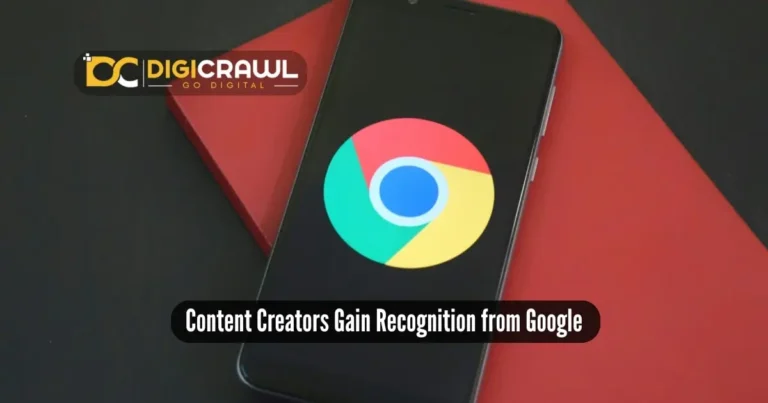How Mobile-Friendliness Affects Your SEO and How to Optimize for Mobile
With over 60% of global web traffic coming from mobile devices, search engines like Google have fully embraced mobile-first indexing. That means they predominantly use the mobile version of a site for indexing and ranking.
In 2025, mobile browsing isn’t just a trend, it’s the norm now. For SEO professionals and digital marketers, this shift highlights the importance of mobile optimization. Making it a necessity because a mobile-friendly website not only enhances user experience but also plays a vital role in search engine rankings.
Why Mobile Optimization Matters for SEO?
Optimizing your site for mobile usage is one of the core factors of technical SEO. Here’s why it matters;
The Shift to Mobile-First Indexing
Google’s mobile-first indexing means that the mobile version of your website will be considered the primary version for ranking purposes. If your site is lacking in mobile content or functionality as compared to your desktop, your rankings could suffer.
Google’s Ranking Priorities
Google prioritizes websites that offer a seamless mobile experience. This means that factors such as page speed, responsive design and mobile usability directly influence your website’s visibility in search results.
What is its Impact on Traffic, Engagement and Conversion?
A mobile-optimized website significantly improves user experience, reducing bounce rates and increasing engagement. Because users are more likely to stay, interact and convert when the mobile experience is smooth and understood.
How Mobile Optimization Affects Your SEO Rankings
Mobile-First Indexing
The content and structure of your mobile site are crucial due to Google’s mobile-first indexing. So, you have to make sure that your mobile site contains all the essential content and metadata present on your desktop site.
Page Speed and Mobile-Friendliness
Mobile users expect quick-loading pages; delays can lead to higher bounce rates and lower rankings. This results in a bad user experience, making page speed a significant ranking factor.
Responsive Web Design
Responsive design ensures your website adjusts seamlessly to different screen sizes, delivering a consistent experience across all devices. This adaptability not only enhances user satisfaction but is also liked by search engines.
Mobile-Friendly Navigation and UX
Simplified navigation, user-friendly buttons and inherent layouts contribute to a positive user experience. Google recognizes and rewards the sites that prioritize mobile usability.
Key Mobile Optimization Strategies to Improve Your SEO
Implement Accelerated Mobile Pages (AMP)
AMP is an open-source framework designed to speed up web page loading on mobile devices. It simplifies HTML and CSS, helping pages load faster, improving user experience and boosting search rankings.
Optimize Images for Mobile
You have to use optimized images, because large images can slow down your site. For that, use modern formats like WebP, compress images without sacrificing quality and implement responsive images using srcset and sizes attributes to ensure optimal loading on various devices.
Ensure Readability
Use legible fonts, maintain adequate line spacing and contrast to enhance readability on small screens.
Streamline Forms for Mobile
Simplify forms by reducing the number of fields, using appropriate input types and enabling autofill. This reduces user friction and increases conversion rates.
Eliminate Unwanted Interstitials/Pop-Ups
Avoid pop-ups that cover content or are difficult to dismiss on mobile devices. Such things can lead to penalties from search engines and frustrate users.
Design for Various Screen Sizes
Test your website on multiple devices to ensure consistent performance. For that, use flexible layouts and media queries to adapt to different screen sizes and orientations.
Mobile-Friendly Design Best Practices
Mobile-First Design Approach
Design your website with mobile users in mind from the outset. After that prioritize essential content and functionalities for smaller screens, then scale up for larger devices.
Simplicity in Layout and Navigation
Keep layouts clean and navigation clear. Additionally, use collapsible menus, clear calls-to-action and avoid clutter to enhance user experience.
Avoiding Common Design Mistakes
Steer clear of using Flash, unplayable content, or elements that require horizontal scrolling. Also, make sure that all features are accessible and functional on mobile devices.
Importance of Fast Loading Time
Fast-loading sites improve user satisfaction and SEO rankings. To optimize your site’s performance, minimize HTTP requests, leverage browser caching and reduce server response times.
Tools and Resources
The following are the tools that you can use to optimize your site’s mobile usability.
- Google Mobile-Friendly Test: You can assess how easily a visitor can use your page on a mobile device by testing.
- PageSpeed Insights: Analyze your site’s performance and receive suggestions for improvement.
- Search Console Mobile Usability Report: Identify and fix mobile usability issues on your site.
- SEMrush / Ahrefs: Conduct comprehensive mobile SEO audits to uncover and address potential issues.
Actionable Mobile Optimization Checklist
Here’s the final checklist that you can implement to optimize your site’s mobile speed.
- Implement responsive web design.
- Optimize images using modern formats and compression.
- Ensure text is legible with appropriate font sizes and contrast.
- Simplify navigation with touch-friendly elements.
- Streamline forms for ease of use on mobile devices.
- Eliminate intrusive pop-ups and interstitials.
- Test your site across various devices and screen sizes.
- Utilize tools like Google’s Mobile-Friendly Test and PageSpeed Insights.
At DigiCrawl, we offer a wide range of digital marketing services tailored to your business needs. Whether you’re seeking expert support for overall marketing or targeted SEO services in Islamabad, we’re here to help.
Conclusion
With the majority of web traffic coming from mobile devices and search engines are prioritizing mobile-optimized sites. Making it clear that Mobile-friendliness is no longer optional; it’s essential. So in 2025, ensuring that your website is mobile-friendly is crucial for SEO success.
So, how to overcome?
By implementing responsive design, optimizing performance and focusing on user experience, you can enhance your site’s visibility, engagement, and conversion rates. Start optimizing for mobile today to stay ahead in the digital landscape of 2025.
Industry Insights
- Google reports that 53% of mobile users abandon sites that take longer than three seconds to load.
- Implementing AMP can lead to a 20% increase in conversion rates for e-commerce sites.
- Responsive design can improve user engagement by up to 50%.
Note: The above statistics are based on industry research and may vary depending on specific circumstances.







